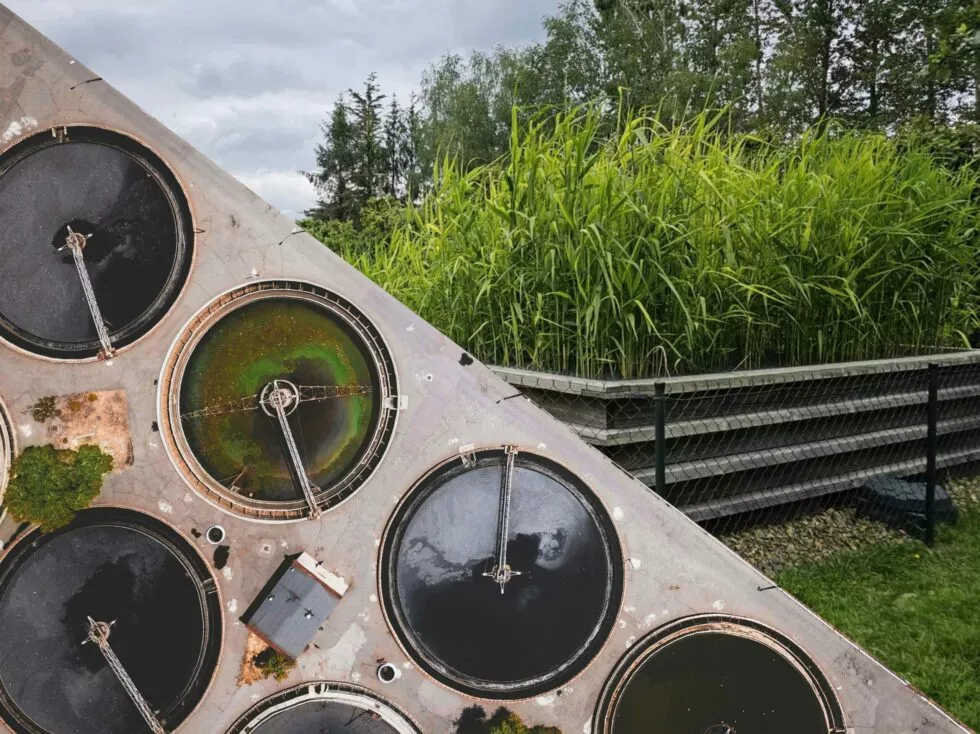Collective or individual sanitation: how can a design office help you choose?

Understanding the differences between collective and individual sanitation
Sanitation plays a fundamental role in protecting public health and preserving the environment. It is a crucial issue for local communities as well as for individuals, as it ensures that wastewater is properly treated to avoid contamination. There are two main solutions available to decision-makers: collective sanitation and individual sanitation. Collective sanitation relies on a sewer network connected to a central treatment plant, while individual sanitation involves individual installations such as septic tanks, micro-treatment plants and even Sanitation Gardens.
Each of these options has advantages and disadvantages that depend on several factors such as population density, site topography and user preferences. The design office can help you evaluate the different options based on your specific needs, site constraints, local regulations and your budget.
The advantages of collective sanitation
One of the main advantages of collective sanitation is the centralised management of wastewater. This system makes it possible to efficiently treat large quantities of wastewater thanks to a well-maintained and extensive network, which considerably reduces the risk of pollution. Furthermore, management is often provided by public services, which guarantees compliance with strict quality standards and regular maintenance. Indeed, collective treatment plants are regularly inspected to ensure that they are operating optimally and meeting environmental standards.
However, the installation and maintenance of such systems can be costly, particularly in rural areas where the population density does not always justify this investment. In these cases, a design office can carry out a feasibility assessment to determine whether collective sanitation is viable, and whether the associated costs are reasonable in relation to the expected benefits. They can also help to identify possible subsidies or financial aid that could make such a project more affordable.
The benefits of individual sanitation
Individual sanitation is often favoured in rural or suburban areas where access to the collective network is limited or non-existent. This system offers a certain independence and can prove to be economically advantageous in the long term. Thanks to technological advances, individual installations are becoming increasingly efficient, offering wastewater treatment solutions that are both effective and environmentally friendly.
However, the installation of an autonomous sanitation system requires a precise evaluation by a design office to ensure its compliance with current regulations and its long-term efficiency. Design offices can also advise on the best management and maintenance practices to ensure that the system remains operational and environmentally friendly.
The role of a design office
A specialised design office plays a role in the choice and implementation of the sanitation system. Their expertise enables them to offer a comprehensive analysis of specific needs, taking into account the characteristics of the site, local regulations and user preferences. They provide feasibility studies, cost simulations and technical recommendations to help make an informed decision. In addition, they ensure that the chosen system is sustainable, efficient and compliant with current standards.
How to choose between collective and individual sanitation?
Regulatory implications
Regulations regarding sanitation vary from region to region and can significantly influence the choice between collective and autonomous systems. A design office up to date with the latest standards and legislation guarantees the conformity of the installations, thus avoiding costly fines or subsequent compliance measures. Their role is to ensure that the proposed solutions meet all legal requirements and that they meet the expectations of the local authorities. In addition, they can help you understand the specific requirements of your region and navigate the process of obtaining the necessary permits.
The choice between collective and autonomous sanitation requires an in-depth analysis of the specific needs and constraints of each project. Key criteria include location, population density, available budget and current regulations. A design office can optimise this choice by offering an overview of the available options. Their expertise guarantees that all technical, economic and environmental aspects are taken into account, thus ensuring that the chosen solution is not only viable but also sustainable in the long term.
Economic factors
The costs associated with each type of sanitation vary and depend on many factors such as location, the size of the population served, and existing infrastructure. A design office can help estimate initial and long-term costs, including installation, maintenance and necessary updates. This estimate makes it possible to compare options on an economic basis, taking into account possible financial assistance and economies of scale.
Environmental constraints
Environmental impact is another factor to consider. While collective sanitation can offer centralised wastewater treatment solutions, thus reducing the risk of local pollution thanks to advanced treatment technologies, autonomous sanitation, if poorly managed, can have harmful consequences for the environment. Therefore, it is essential to choose technologies that minimise negative impacts on the local ecosystem. Design offices assess the ecological footprint of each solution and propose alternatives that respect the environment, favouring sustainable and innovative practices that contribute to the protection of biodiversity.
Conclusion and outlook
Ultimately, the choice between collective and individual sanitation is a complex decision that requires in-depth technical expertise. A design office can be a valuable ally, providing detailed analyses and customised recommendations. Their contribution is essential to guarantee that the adopted solution is effective, profitable and environmentally friendly, in accordance with current standards. By anticipating future needs and adapting to technological developments, design offices help local communities and individuals make informed choices that respond to the challenges of tomorrow.

